Digital Decluttering Tips
We are all living in a digital world. Whether you’re connected at work or school, or at home or 24-7 with your mobile device attached to your hip, our work and lives revolve more around digital files then paper ones.
Paper is still a problem for many, but our digital space is getting cluttered just as or more than our physical spaces.
If we actually counted our digital files, the count might give our physical items a run for their money. There is a strong reason why our digital houses are not in order.
It’s due to space, or the perceived limitless space for our digital belongings.
Limitless Storage?
Generally, we are limited by the digital storage space and unless we are butting up to the limits, you don’t actually think of the space you are filling and using up. This is especially true for taking digital photos. Film photos are long gone and taking a digital picture is effortless.
Many of us tend to obsessively take hundreds with the goal of getting the best shot. Yet when it comes to tidying up our photos, we are far less obsessive with the decluttering task.
Just as it comes up in our physical space, you are quick to say or think, “I might need it for later, so I won’t delete it now.” This pattern of thinking is what gets us into trouble. I’ve uttered these words myself, and the truth is that when later comes, I don’t need the file.
Keeping the file holds a false sense of security and many years down the road I don’t even remember why I ever held on to the file. All these situations contribute to our digital clutter. We know the challenge so let’s dig into the solutions.
Cleared Desk Policy
I love a cleared desk at the end of the work day and I like to extend that feeling to the desktop of my laptop too. A messy cluttered desktop feels like walking into an untidy space. Apply these simple strategies to clearing your desktop:
- Make it a rule – Make having a cleared desk a non-negotiable in your life.
- If you must, create one folder that you house on your desktop so that you can move all files and folders scattered on the desktop into that one folder at the end of the day.
- Make it a daily task, a ritual of sorts, so that you can be and stay more organized with your digital files.
Folders are equivalent to bins
Bins of all shapes and sizes are used to corral our physical things that are like kind in nature. Folders do the same thing with our digital items. Using folders in a logical and systematic way allows you to organize your digital space effectively and efficiently. Here are some guidelines on creating a digital file structure.
Folder structure 2-3 levels deep
This is an important point and one that gets forgotten easily during the decluttering process. I often see this when I help clients tidy their papers and files.
There is a problem of overcategorization. Too many categories and subcategories make it very time consuming to keep up with the papers and files. This idea is mimicked in our digital space too.
Creating a folder structure where there are multiple folders within folders and then more subfolders easily create a messy web of, you guessed it, too many folders.
The idea behind all this subcategorization is that when it comes time to look for a file, it will be easily found and accessed. However, that isn’t what happens.
Our important files actually get lost in the sea of folders with this type of organization system. I recommend keeping it as simple as possible and resisting the urge to create more categorization with added and unnecessary folders.
Try creating a folder structure that is a maximum of 3 levels deep. A digital file system structured in this way can look like this:
- Level 1: Taxes
- Level 2: Tax Year (2022, 2021, 2020…)
- Level 3: Related tax files
Consistent naming
One big tip that I don’t see many taking advantage of, is consistent file or folder naming.
Take advantage of the automatic alphabetizing of files and the sequential structure of numbers. This allows for your files and folders to follow a logical system that you can keep up for a long time.
Let’s dive in with an example. Instead of labeling one file January 2022 and another one 2022 January, be consistent in the structure by starting with either the month or the year first. Also, if logical to do so, consider “1 – January 2022” instead of January 2022 because this structure takes advantage of the numerical sort.
Maintain file structure
Add tidying up your files and computer desktop as an actual to-do item in your calendar. You must schedule and plan for this activity otherwise you risk that it won’t get done. Following through on the task is especially important because the digital clutter can accumulate very quickly and can be ignored very easily.
Just as we see piles of physical clutter in our homes, the digital clutter can often be far worse and take just as long to declutter and organize.
This is why I recommend staying on top of this task as best as possible. Make it a daily maintenance task just like washing the dishes or clearing the sink.
It’ll take far less time when done daily instead of hours, days, and weeks if left to accumulate and clutter up.
Conclusion
Our clutter goes beyond our physical space and it’s increasing a problem if not an outright disaster hidden in our hand-held mobile devices and slim, lightweight computers.
It’s deceptive, but the number of digital files we retain also require maintenance that is a daily task just like physical clutter. Apply these digital decluttering tips in this post and share with me how it goes.
Southern California based Professional Organizer, Sandy Park, owner and founder of Tidy with SPARK shares her joy of organization with her clients.
She serves clients in Orange County as well as the hundreds of thousands of followers on her combined social media platforms.
Connect with Sandy through her website or by connecting through her social channels.

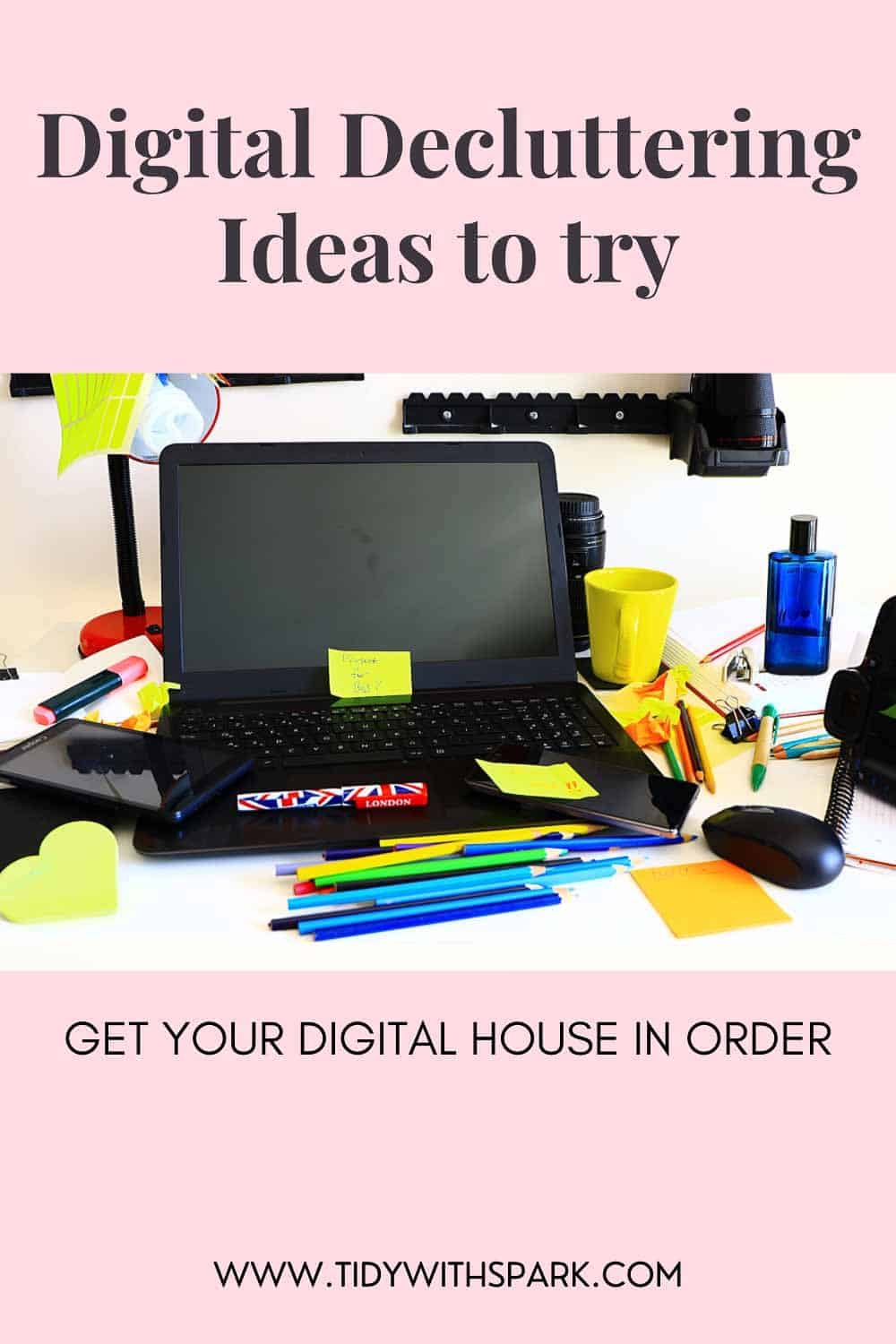
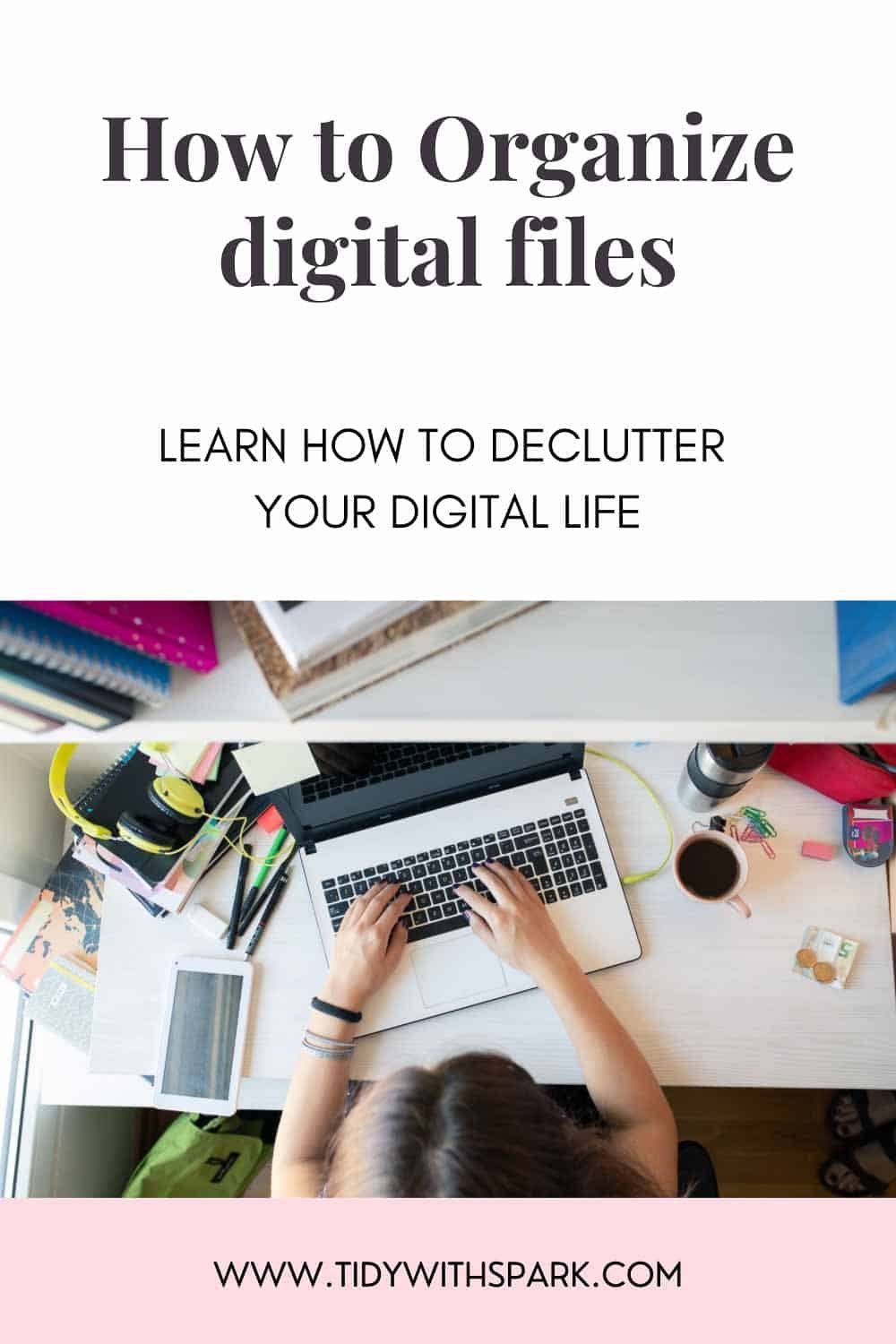
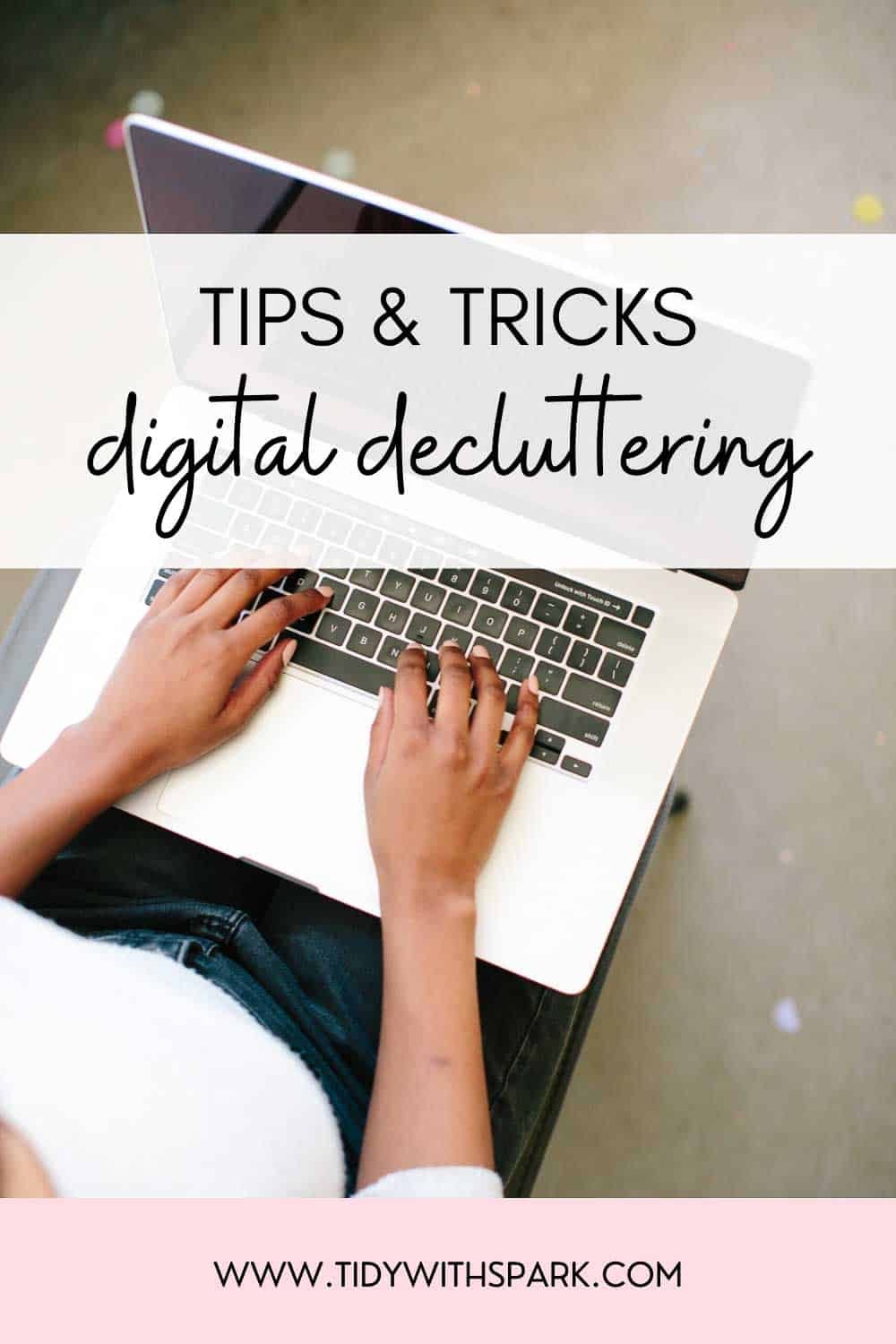
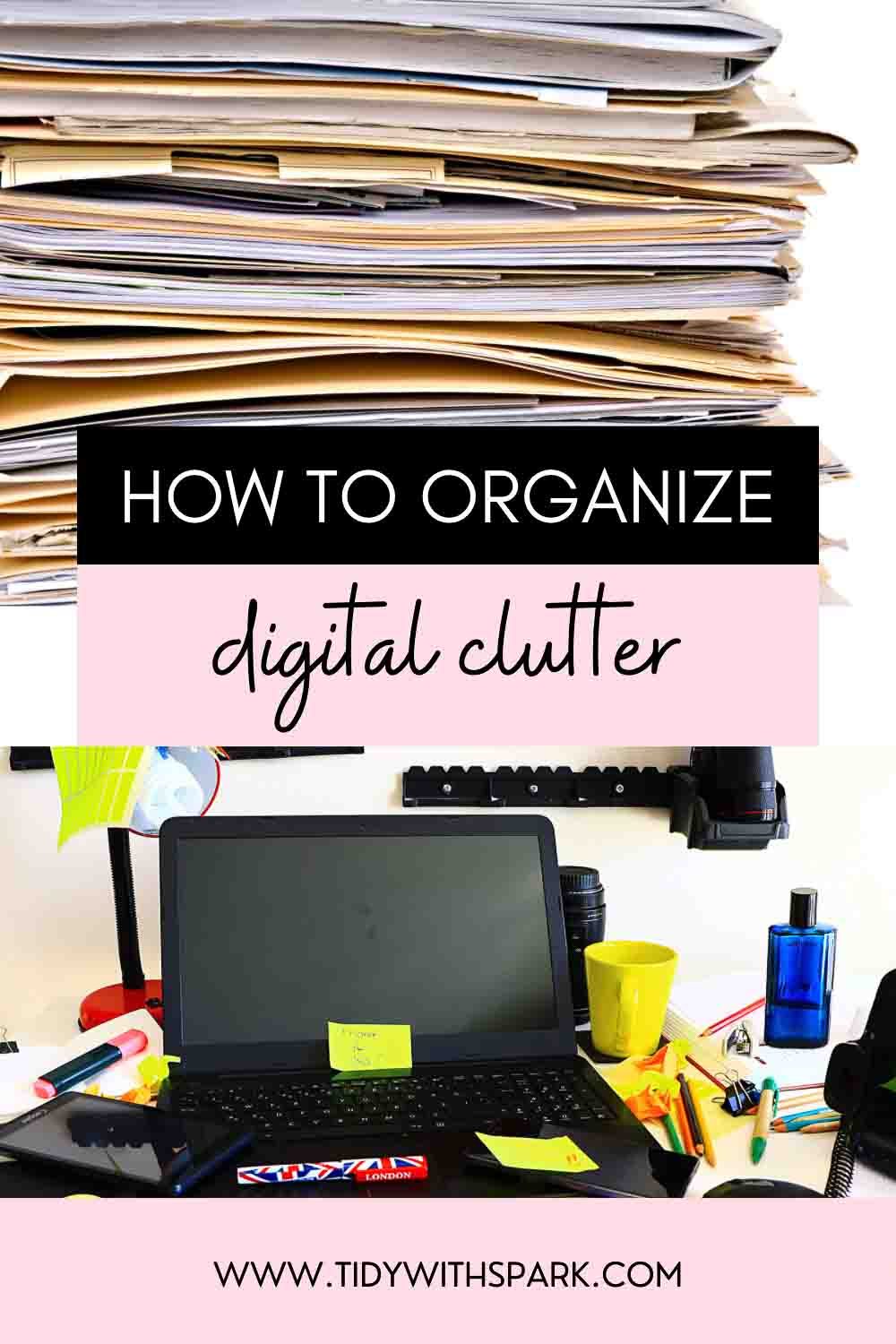
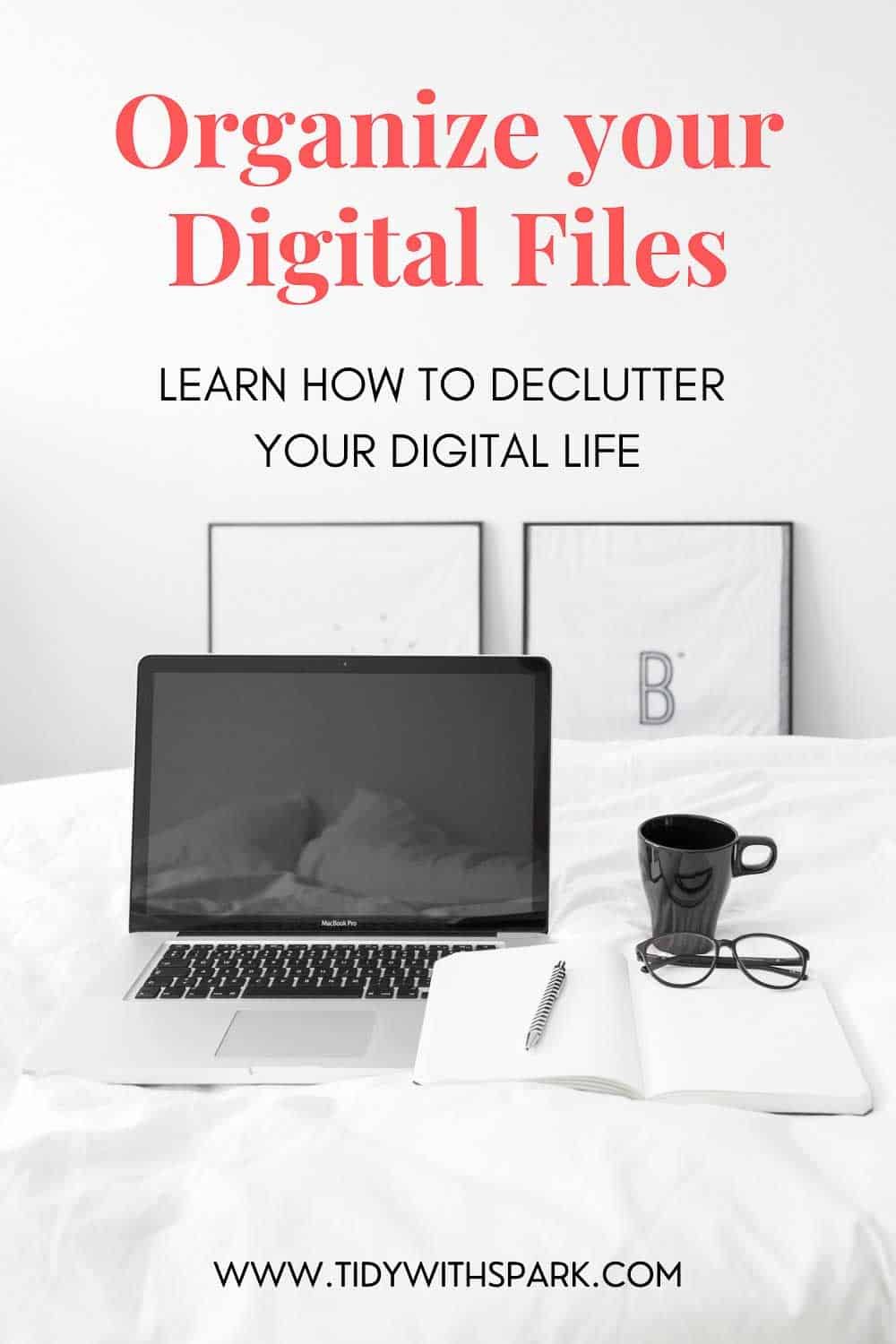
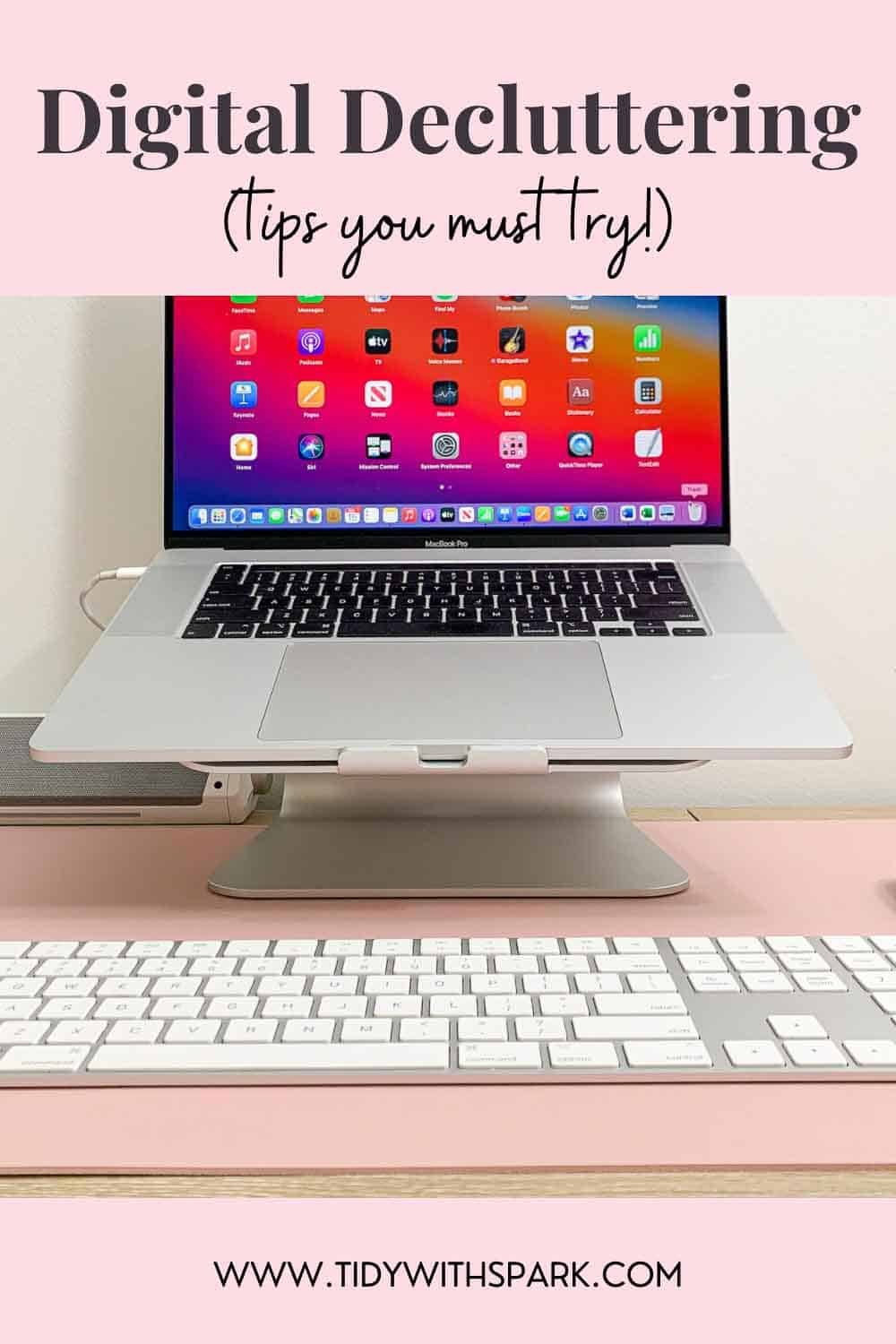
This is awesome and so helpful, I’m sure many of your followers will enjoy a part 2 of this.
Thank you Lupe! Happy to hear and yes I can definitely write more on the subject!